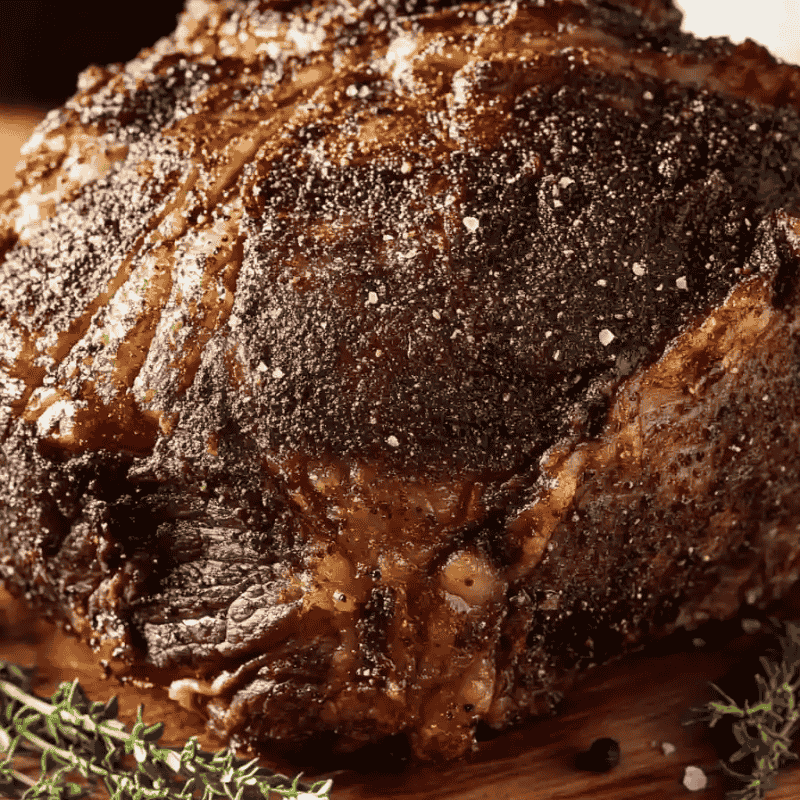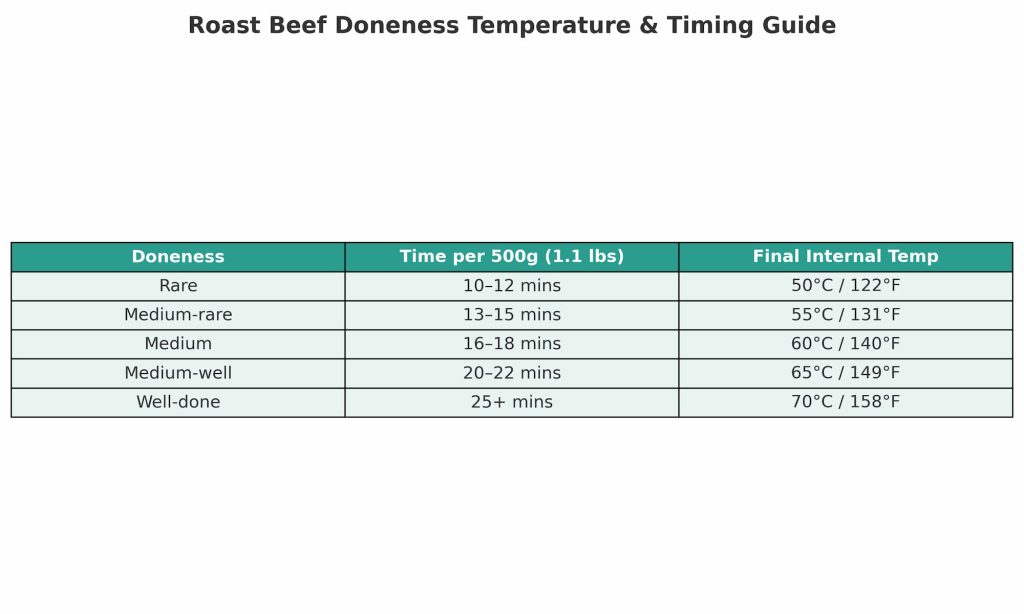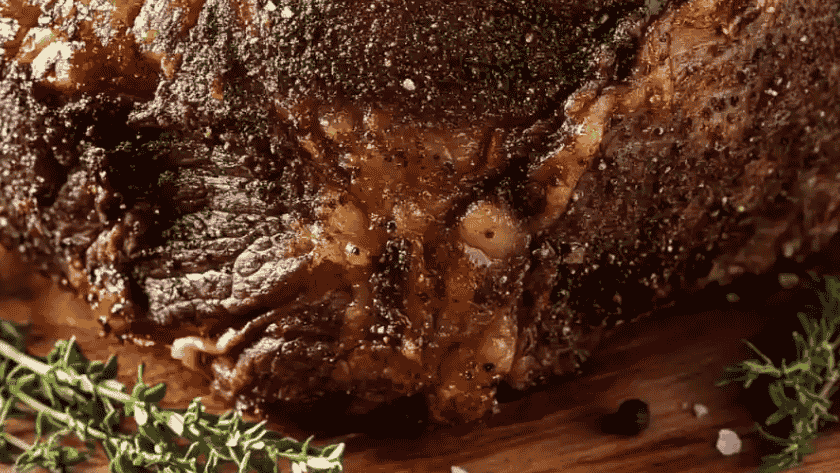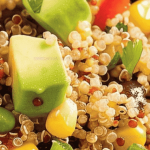Few dishes can rival the comfort and elegance of a perfectly cooked roast beef. It’s a classic centerpiece for Sunday lunches, holiday dinners, and family gatherings. But let’s be honest — roast beef can feel intimidating. Cook it too long, and it dries out. Cook it too little, and it’s underdone. So how do you get it right every time?
This detailed guide will walk you through everything you need to know — from choosing the right cut and seasoning, to oven temperatures, timings, resting, and slicing. By the end, you’ll feel confident that your roast beef will turn out tender, juicy, and bursting with flavor.
Why Roast Beef Is a Timeless Classic
Roast beef has been served at family tables for centuries, and for good reason. It’s versatile, flavorful, and pairs beautifully with side dishes ranging from crispy roast potatoes to Yorkshire pudding. It’s also one of those meals that makes an ordinary day feel special. Think of it as the culinary equivalent of putting on your best suit — simple yet impressive.

Other Popular Guides
Choosing the Right Cut of Beef
The first step to success is selecting the right cut. Not all beef cuts are created equal for roasting. Some are lean and tender, while others require slower cooking to break down tough fibers. Here are the best cuts for roast beef:
- Sirloin – Tender, juicy, and ideal for roasting quickly at high heat.
- Ribeye or Prime Rib – Marbled with fat, which keeps the roast moist and flavorful.
- Topside or Silverside – Leaner cuts that benefit from longer, slower roasting.
- Tenderloin (Fillet) – Very tender but also very lean. Works best when roasted to medium-rare.
Tip: If you’re unsure, ask your butcher for a cut that works best for roasting. Good quality meat is the foundation of a good roast.
Preparing the Beef Before Roasting
Preparation is just as important as cooking. A few small steps make a big difference in how your roast turns out.
- Bring to room temperature – Take the beef out of the fridge at least 30–60 minutes before roasting. Cold meat cooks unevenly.
- Pat dry – Moisture prevents browning, so pat the meat dry with kitchen paper.
- Season generously – Don’t be shy with salt and pepper. Rub it all over for a flavorful crust.
- Optional rubs – Garlic, rosemary, thyme, mustard, or olive oil add depth and aroma.
Think of this step as giving your roast beef a little spa treatment before the big show.
Choosing the Right Cooking Temperature
One of the biggest mistakes people make is blasting roast beef with high heat the entire time. The secret lies in combining high heat for browning and moderate heat for even cooking.
- Start hot – 220°C (425°F) for the first 20 minutes to develop a golden crust.
- Lower heat – Reduce to 160–180°C (320–350°F) for the remaining cooking time.
- Fan ovens – Reduce by about 20°C (36°F).
This method ensures the beef is beautifully browned on the outside yet juicy and evenly cooked inside.
Roast Beef Cooking Times (Per Weight)
Cooking time depends on both the weight of the beef and your preferred level of doneness. Use the following guide:
| Doneness | Time per 500g (1.1 lbs) | Final Internal Temp |
|---|---|---|
| Rare | 10–12 mins | 50°C / 122°F |
| Medium-rare | 13–15 mins | 55°C / 131°F |
| Medium | 16–18 mins | 60°C / 140°F |
| Medium-well | 20–22 mins | 65°C / 149°F |
| Well-done | 25+ mins | 70°C / 158°F |
Always use a meat thermometer. Cooking by time is helpful, but temperature guarantees accuracy.

Step-by-Step Guide: Cooking Roast Beef Perfectly
- Preheat your oven – Set it to 220°C (425°F).
- Season the beef – Rub with salt, pepper, and herbs. Place in a roasting tin.
- Initial sear – Roast at high heat for 20 minutes.
- Lower the temperature – Drop to 160–180°C (320–350°F) and continue cooking per weight guide.
- Check doneness – Use a thermometer in the thickest part of the beef.
- Rest the meat – Remove from oven, cover loosely with foil, and let it rest for 20–30 minutes.
- Carve and serve – Slice against the grain for tender pieces.
The Importance of Resting Roast Beef
Resting is the unsung hero of cooking roast beef. After removing it from the oven, the juices are hot and restless. Cutting into it immediately causes all those flavorful juices to spill out onto the board.
Resting for 20–30 minutes allows the juices to redistribute, meaning each slice stays moist. Think of it like letting a freshly baked cake cool — patience pays off.
Tips to Enhance Flavor and Juiciness
- Baste during cooking – Spoon pan juices over the beef every 30 minutes.
- Use a roasting rack – Keeps beef elevated, ensuring even cooking.
- Add vegetables to the tray – Carrots, onions, and celery create natural flavors for gravy.
- Rub with mustard – Dijon mustard brushed before roasting adds tang and helps browning.
- Don’t over-salt before cooking – Salt draws moisture; balance is key.
Making the Perfect Roast Beef Gravy
What’s roast beef without gravy? The tray juices are liquid gold.
- Remove beef – Set aside to rest.
- Deglaze the pan – Add wine, stock, or water to loosen caramelized bits.
- Simmer and reduce – Let it thicken naturally.
- Optional thickener – Add cornstarch or flour slurry for a richer texture.
- Season to taste – Adjust with salt, pepper, or a splash of Worcestershire sauce.
The result? A velvety gravy that ties the meal together.
Side Dishes That Pair With Roast Beef
A roast beef dinner is only as good as the sides you serve with it. Some timeless pairings include:
- Roast potatoes – Crispy on the outside, fluffy inside.
- Yorkshire pudding – Classic British addition.
- Steamed greens – Broccoli, beans, or asparagus for freshness.
- Roasted carrots and parsnips – Sweet, caramelized balance to savory beef.
- Cranberry or horseradish sauce – Adds brightness and zing.
Mistakes to Avoid When Cooking Roast Beef
- Skipping the thermometer – Leads to guesswork and uneven results.
- Carving too soon – Causes juices to run out.
- Overcrowding the oven – Prevents proper air circulation.
- Choosing the wrong cut – Not all beef is ideal for roasting.
- Forgetting to season properly – Under-seasoning results in bland meat.
Storing and Reheating Leftover Roast Beef
- Refrigerate – Store slices in airtight containers for up to 3 days.
- Freeze – Wrap tightly and freeze for up to 3 months.
- Reheat gently – Warm in foil at 160°C (320°F) or in a covered skillet with a splash of stock.
Leftover roast beef also makes great sandwiches, stir-fries, or hearty beef salads.
Nutritional Value (Per 100g Cooked Beef)
- Calories: ~250
- Protein: 26g
- Fat: 17g
- Carbohydrates: 0g
Roast beef is a nutrient-dense food, providing protein, iron, and B vitamins — essential for energy and overall health.
FAQs
How long should I cook roast beef per pound?
Roast beef typically needs 20–25 minutes per pound at 350°F (180°C) for medium doneness. For rare or well-done, adjust the time slightly, but always check with a meat thermometer for accuracy.
What temperature should roast beef be when done?
The safe internal temperature depends on doneness: Rare (50°C / 122°F), Medium-rare (55°C / 131°F), Medium (60°C / 140°F), Medium-well (65°C / 149°F), Well-done (70°C / 158°F).
Should I cover roast beef while cooking?
No, roast beef should be cooked uncovered to develop a golden crust. You can loosely cover it with foil during resting to keep it warm and moist.
How long should roast beef rest after cooking?
Rest roast beef for at least 20–30 minutes before carving. This allows the juices to redistribute, keeping the meat tender and juicy.
Final Thoughts
Cooking roast beef perfectly doesn’t need to feel overwhelming. With the right cut, accurate temperature, and a little patience, you can achieve tender, juicy results every time. Remember, the key is balance: a seared crust on the outside, a juicy center inside, and enough resting time before carving.
Think of roast beef like conducting an orchestra. Each element — the cut, the seasoning, the oven heat, the resting — plays its part. When everything works in harmony, the result is a dish that’s not just food, but a memory shared around the table.
So next time you plan a roast, trust the process, follow this guide, and get ready to serve a meal that will impress without stress.



